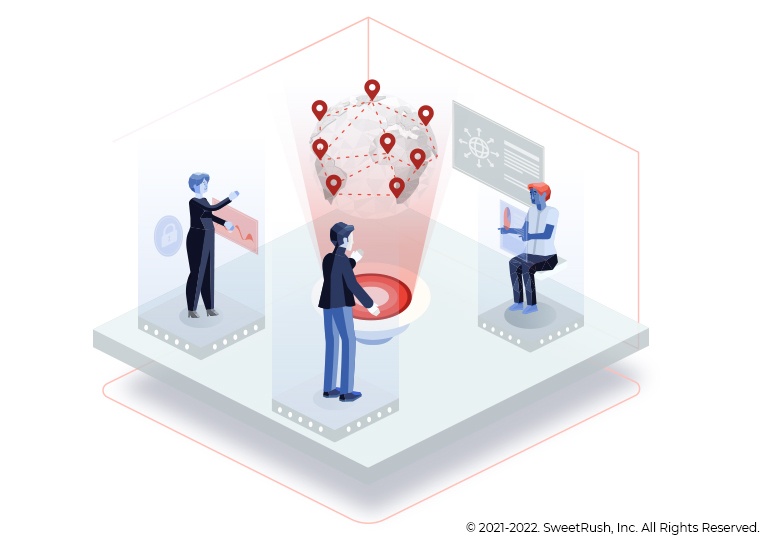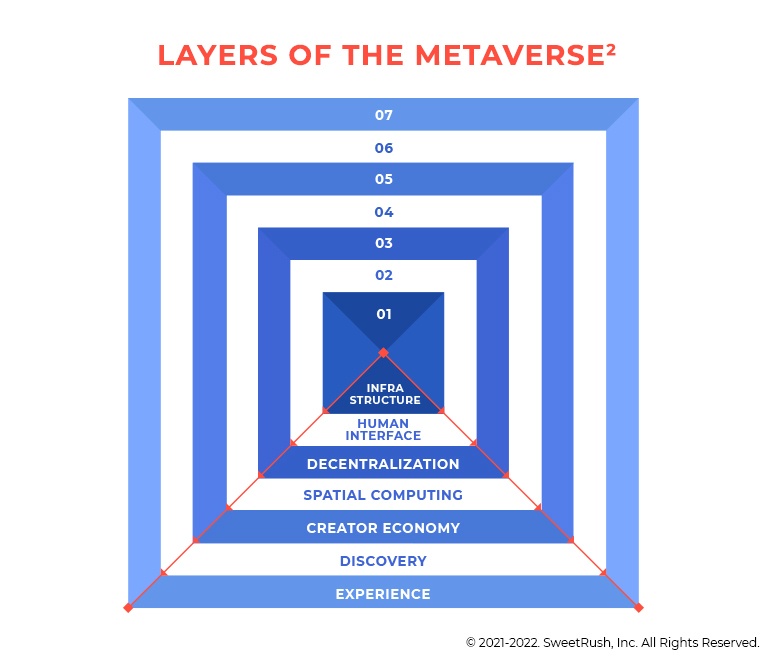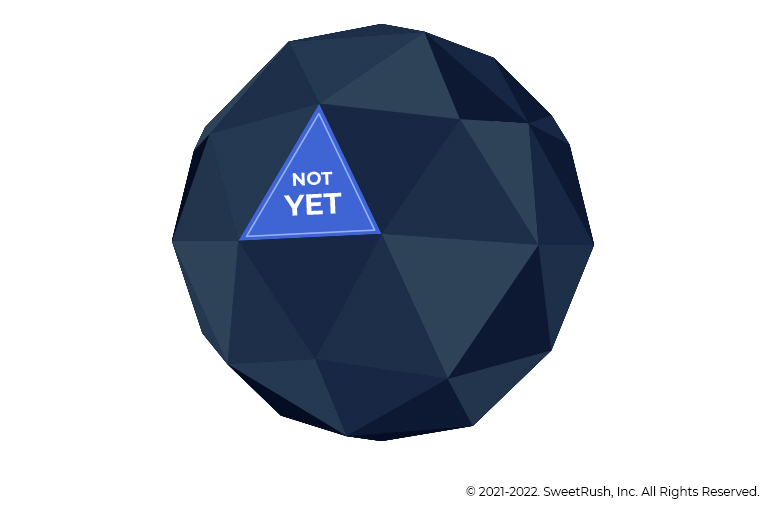A Layered Look At The Metaverse
With exciting new XR hardware, apps, and use cases emerging (literally) every day, it’s clear that the metaverse isn’t just a passing fad. Businesses are creating a presence there; celebrities are developing virtual property; and users are creating art, experiences, and services for this fully functional digital market. It’s no wonder that learning professionals are wondering, “What’s in the metaverse for L&D?”
That’s a great question—and one that positions you among the vanguards of the learning industry. (Prefer to start with a larger leap for learning-kind? Our eBook, Ready, Learner One? The L&D Innovator’s Gateway To Immersive Learning and the Metaverse, will give you a running start.)
Make the Metaverse Work For The Entire Workplace
Taking your learning program to the metaverse is just one part of a much larger strategic conversation. (These seven needs analysis steps for immersive learning will help you break the ice.)
Here are just a few of the questions you’ll need to consider with your leadership team and stakeholders.
- What needs can the entire organization meet in a metaverse?
- Which other areas could share L&D’s metaverse assets?
- Where can you combine budgets?

Prevent Digital Silos
If you’re working with an immersive learning vendor-partner, now is the time to bring them in! (Our checklist will help you find the perfect-match partner to guide your needs analysis and strategy conversations!) They’re not just there to build; they can help you, your leadership team, and your stakeholders to look strategically at your entire business.

For example, a hotel chain’s L&D department might use a digital twin of a property to train housekeeping and events staff to create unforgettable guest experiences.
The marketing department might leverage those same assets to entice guests in for a tour—and show them how an epic technology conference or fairy-tale wedding could look on site.
The HR department might use the space at recruiting events to share a day in the life of one of their properties and build excitement about joining the team.
These are just a few examples of the convergence that arises from a solid organizational needs analysis. Here’s how to expand on your shared strategy.
Journey To The Center Of The Metaverse: A Multilayered Needs Analysis
There are multiple levels of the metaverse, and—apologies to Jules Verne—the journey begins at the center.[1] SweetRush’s Immersive Technology team created the guide below to help you think through the right questions with your stakeholders before you set off on this epic quest.

Infrastructure
The core of the metaverse is founded on all things IT: your organization’s bandwidth, tools, sharing, and security.
Guiding questions: How will we connect everyone to the metaverse—or, if everyone’s connected already, how are they connected? What do we need to support user access and secure our assets?
Hardware
This practical layer depends on the devices your people will use to connect to the metaverse, e.g., laptops, smartphones, VR headsets, etc.
Guiding questions: Which devices, and how many, do we need to budget for? How will we distribute them?
Decentralization
The metaverse will not be regulated or run by a single corporation or individual (unless you build a corporate metaverse like Accenture’s One Accenture Park[3]). It’s a true democracy: Users create and enforce the laws of the land.
Guiding questions: Do we want to build in an existing metaverse or create our own? If we choose an existing metaverse, are we comfortable establishing a digital presence in a collectively owned space?[4] How might our presence in a given metaverse affect the way our organization is perceived?
Spatial Computing
This layer is all about the technologies you’ll use to build your metaverse presence. If you choose the DIY route, these include VR, 3D web applications, 3D creation engines, and/or game engines.
Other metaverses, such as Lightship, Roblox, and Horizon, offer tools to help you build your presence and experiences.
Whichever route you choose, you’ll want to commit to it for the long term: Changing technologies can be costly and difficult.
Guiding questions: What kind of technology do we want to create our presence? Can we commit to it for the long term?
Creator Economy
Content creation isn’t top-down in the metaverse, and that’s a great thing! This layer is where your people can exchange their creations, skills, and hacks with others.
Guiding questions: How will we reward our creators and innovators? What kind of a token economy would be meaningful to them and sustainable for us?
Discovery
Here’s where internal marketing comes in! This layer is all about building excitement and sharing the who, why, and WIIFM (“What’s in it for me?”) of your metaverse experience with your people.
Guiding questions: Who are our audiences, and what’s in the metaverse for them? How can we build anticipation and interest? Who might serve as internal evangelists or influencers for the experiences we’ve created?
Experience
This layer is where you ensure that the world you’ve built is easy, fun, and intuitive to visit. (User testing is your friend here!) For immersion to work, it needs to be seamless—without fumbling or confusion that takes your people out of the moment.
Guiding questions: How have we addressed and tested all 10 of Jakob Nielsen’s usability heuristics?[5] What’s our plan for continued testing as we sustain and expand our presence in the metaverse?

Maintaining Your Organization’s Metaverse Presence
Starting your journey at the center of the metaverse means that conversations get deep, fast. But preparing to break digital ground is only the beginning.
Sustaining and growing your organization’s metaverse presence will require unwavering leader and stakeholder commitment over the weeks, months, and years ahead. That means allocating not only a budget but also a clear process for designing, vetting, and approving new content—and weekly hours to complete each step.
Your team might not have the budget or bandwidth—yet. And that’s OK!
If your organization isn’t quite ready to immerse in the metaverse, we’d encourage you to keep immersive learning topics on your personal and professional radar—and to join the conversation about use cases for training and skilling. (These updates are a great way to share the value and innovation L&D leaders and professionals bring to their organizations!)
In the meantime, you can offer your learners engaging, effective, immersive learning experiences outside the metaverse. (Get a closer look at impactful XR solutions that meet [OK, exceed!] learning and performance objectives.) Doing this work now has the added benefit of moving your training and skilling programs a few steps closer to the metaverse.
Initiate Immersion: Human-Centered Training in the Metaverse and Beyond
We’re so glad you’re curious about how immersive learning can help you make an impact in your organization—and we’d love to help you design a metaverse or XR strategy that helps your learners boost their confidence, wisdom, and care.
The true center of your metaverse journey is your people—and the organization that brings you together around a craft you care about. Immersive training helps you increase access to skilling and create a space where all of your people have a presence.
Whether you’re new to the topic or well-versed in the metaverse, our eBook, Ready, Learner One? The L&D Innovator’s Gateway To Immersive Learning and the Metaverse, will help you create an immersive learning strategy that helps your team be more human together.
References
[1] Unity’s John Riccitiello is a strong believer in the metaverse
[3] Going beyond with extended reality
[4] The Metaverse: The evolution of a universal digital platform

